Tau Lewis’s “Secret Objects”
Tau Lewis makes sculptures out of anything. Some of her recent artwork is constructed with materials including fur, leathers, plaster, acrylic paint, wire, stones, jute, seashells, plaster bandages, cloth, foam sealant, paint cans, copper pipes, polyester stuffing, dried flowers, found toys, human hair, and, what she calls in her captions, “secret objects.”
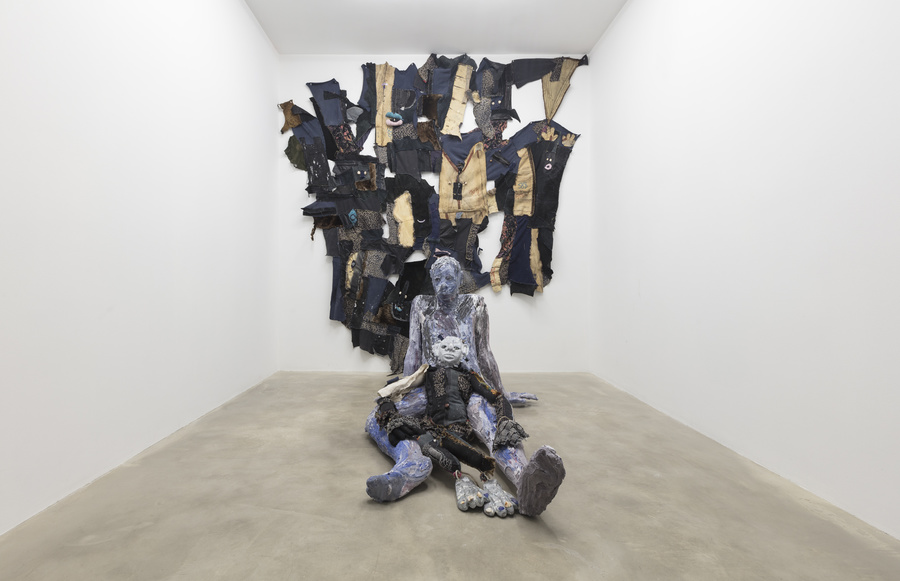
Her materials read like a Dada cut-out: a list of anything. And anything is what we do to survive. Anything is what we have, and the “secret objects” that Lewis cites as part of her medium, well, those are what we want to have. Late pianist and composer Muhal Richard Abrams once said that “improvisation is a human response to necessity.” Anything indexes an experimental necessity, a will to keep going, and Lewis, a Black artist who taught herself how to make work and how to live, uses her environment to build an imaginary that indexes something else, anything else.
Lewis transforms these repurposed and found materials into figures that walk the line between human and non-human. Her assemblages appeared last year at the New Museum and this year at Frieze New York, where the presentation of her work by Cooper Cole Gallery won the Frame Stand Prize. This spring, Toronto-based Lewis opened a solo show at Jeffrey Stark in New York and a two-person show alongside Cheyenne Julien at Chapter NY. She’s also part of an upcoming group exhibition at Mercer Union in Toronto organized by RAGGA NYC, a collective of queer Caribbean artists. We exchanged emails a couple of weeks earlier.
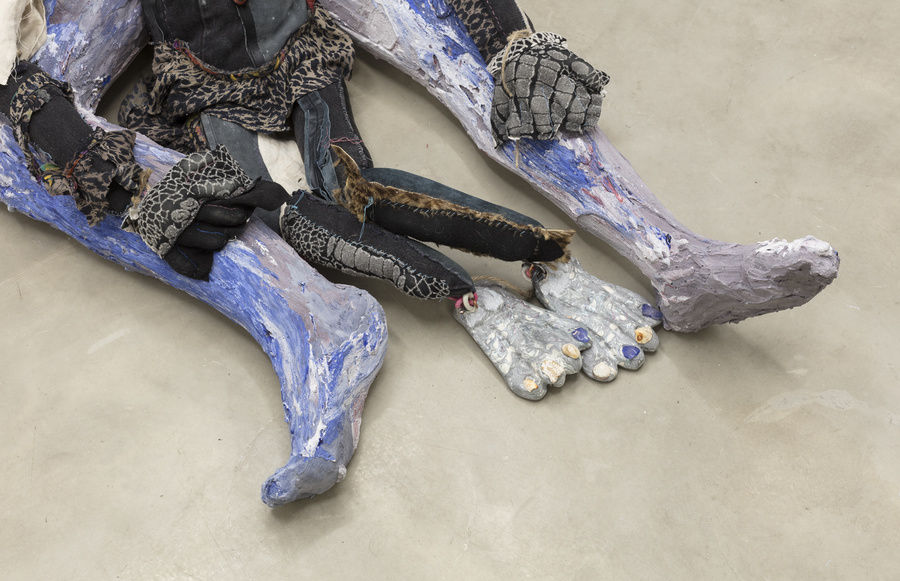
Tiana Reid: Do you like talking about your own work?
Tau Lewis: I think this depends on the context, because I like to choose when, and also to whom, I’m giving access. Artists, especially artists of color, should not feel that we are required to constantly explain the stories we’re telling, especially if the art we’re making is in fact for people of color. I make a lot of work about Blackness, and more specifically, the geographies of the Black imagination, Black wonder. With my work I want to grow, I want to make things that are for Black people. Not all Black artwork is necessarily made for Black people. A lot of Black art centers whiteness in a way that forces Blacks to relive trauma, and whites take interest because the work is inherently about them. I don’t want to do this. But a lot of the time, when making Black art that centers something, some idea other than whiteness, explanations are expected, and this type of work is sometimes not as acceptable. I’ve experienced this before. My work is complex and emotional; talking about it is a complex and emotional labor, which sometimes I enjoy. So it depends on who is listening, and how I feel that day.
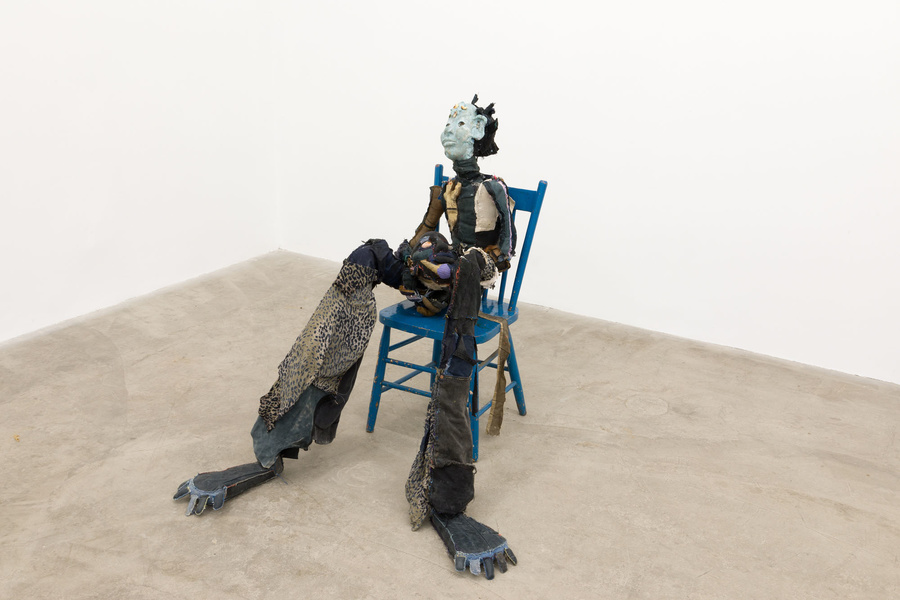
Your work recently showed at Chapter NY with Cheyenne Julien. Chapter’s exhibition description used “portraiture” to bring your works together. Because of the way both of you fuck with form—the face, the body, what it means to represent a life—portraiture is really the last thing that comes to my mind. Instead, I see your sculpture as operating in defiance of portraiture, as exploiting portraits. I’m thinking of how something like“Black portraitures” reifies a certain way of disciplining subjects—whether human, animal, or mermaid (à la your Jeffrey Stark show, making it work to be together while we can). But, still, some of your figures have names, e.g. a recent piece on your Instagram, “Earnie.” How do you understand your relationship to portraiture?
There’s quite a bit to unpack with this question. I’m thinking about the process of art-making by Black people as a central and focused route toward Black ancestral communication and acknowledgment. This is one way that I consider these portraits as sort of spirit conservation vessels. I also call them that because they are the physical outcome of a self-healing process. They reference childhood and vulnerability, and the process of creating them is reflective of personal and historical traumas, wherein every gesture, each stitch or scratch, is part of a labor of love and a material mark toward healing (spirit conservation). They feel like children to me.
I’m thinking about undocumented, unacknowledged, or sometimes inaccessible historical information centers of Black life, such as the oceans, forests, and deep underground spaces. I gave the figures colors and textures that look to me like oceans, earth, and cosmos. Each portrait is infused with seashells, sea stones, or other materials found in rural Jamaica, as well as objects and furs collected in Canada.
Animal and insect imagery, fur, and found objects act as playful and ironic references to the reality of Black bodies as usefully captive, unfree, and sanctioned as separate from other genres of being human. To me, they are bulletproof, unreal, unbelonging, and magical characters of memory and imagination—joyfully realized.
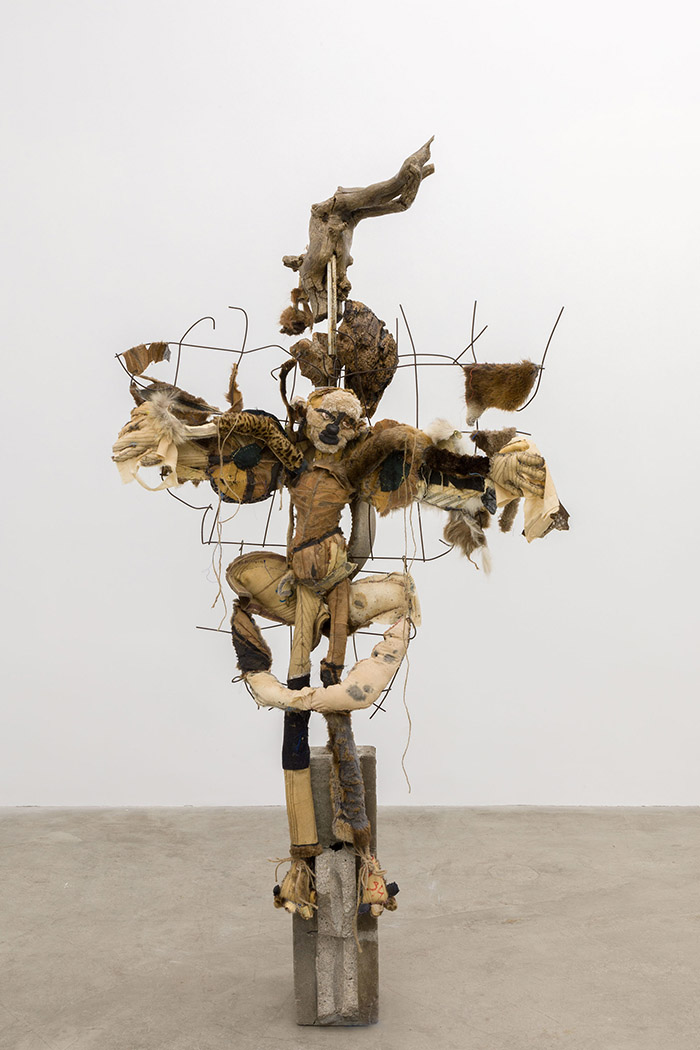
I’m interested in using what’s available to me. I like having a waste not, want not approach to art-making. Even the soft sculptures that I make are made from collections of discarded and repurposed fabrics, with skeletons made from found wire and rebar.
I like to use things that have had a life prior to me finding and repurposing them. I think of these things as material markers of time. I think they are energetically charged by the hands or lives they may have passed through. I wonder about their histories that I don’t know, and what it means symbolically for me to repurpose them. I am thinking about resourcefulness and connecting these acts of collecting and repurposing with diasporic peoples and Black bodies.
Everything is a time capsule of some sort; there are secret things, messages, and objects embedded in the work. Everything has small sacrificial belongings from me.
I am thinking about Black agency, memory, and recovery. I think about the erasure of Black histories, and build portraits from the landscape to tell stories about Blackness.
The list of your materials—let’s say, for three angels waiting (2018)—sometimes sound to me like poems.
Writing is an integral part of my art practice. I write in order to understand myself, the work, to process. I will accumulate notebooks and archives full of writing when creating a body of work. I sometimes refer back to these pages for titles, but they mostly are private and go unseen.
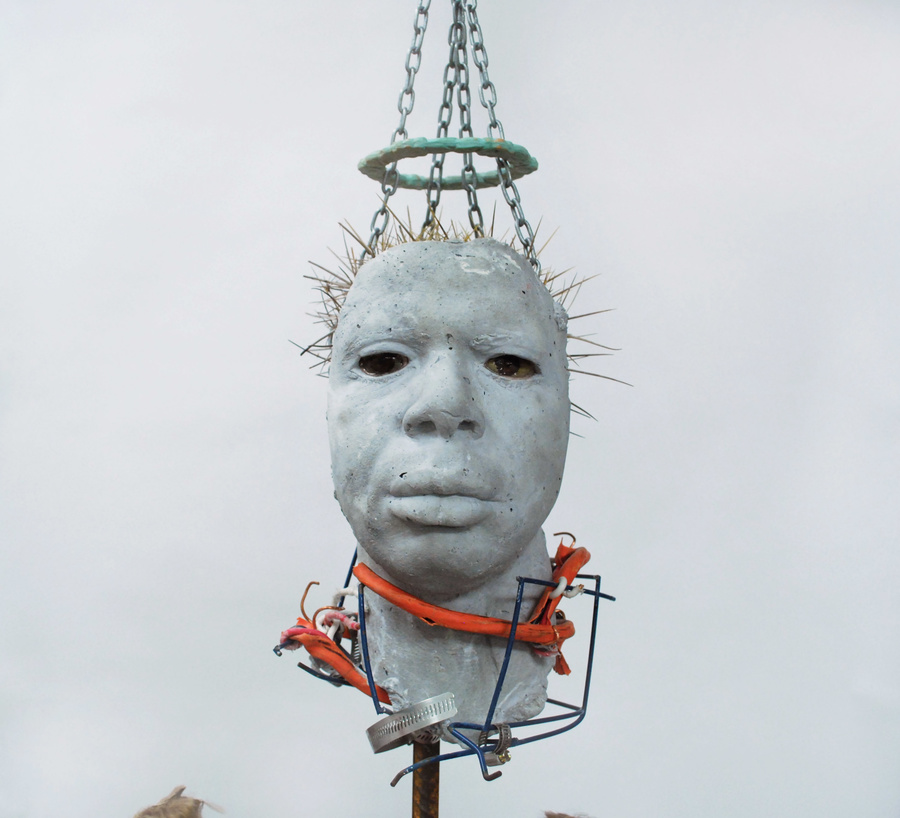
How do you narrate your own teaching and tell the story of your switch from journalism school to art?
My relationship with institutions and the education system has never been a positive one. I made several attempts at every level of schooling, just to finish, or to make it to the next level. I finally graduated high school and was urged toward pursuing journalism, as I was and still am a skilled writer. I have always been making art, and I’m coming to accept in my adult years that this has, for the most part, always been the way that I must live. We all have to live, and I’m not living my best life if I’m not making.
I lasted a couple months in journalism school before dropping out. After that, I entered a design program at a local college and also dropped out. During that year, I participated in my first four group exhibitions: guerrilla-style shows or friends having pop-ups in apartments and whatnot. I haven’t stopped working since then.
I wasn’t happy in school and that is not how I (and many other artists) will learn, so while I was failing, I was making art through a process of material research, scrapping, and non-stop experiments.
What does being self-taught mean to you?
Being self-taught means taking an intuitive, honest approach to making. A lot of us self-taught artists, we make because we have to.
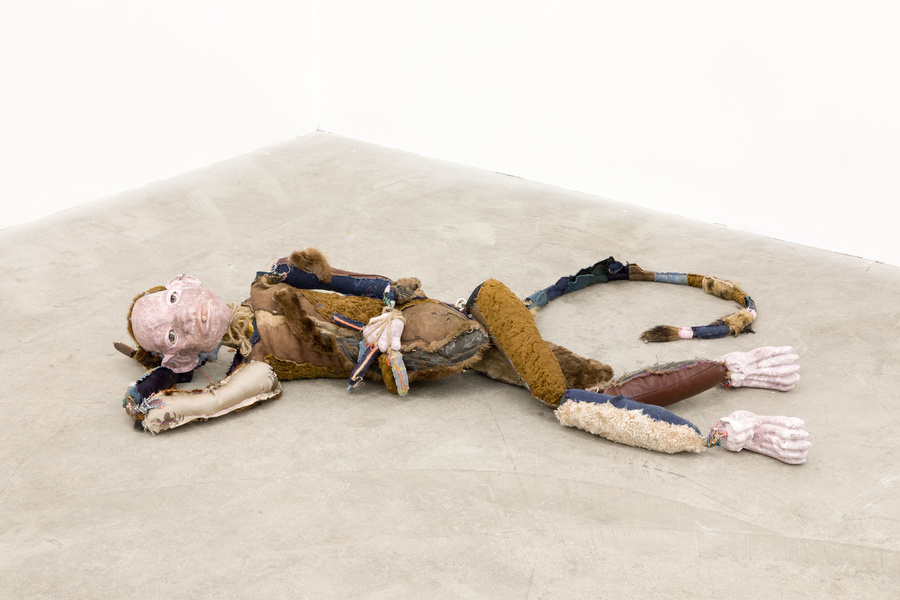
Tiana Reid is a writer, doctoral candidate at Columbia University, and editor at The New Inquiry. She lives in New York City.